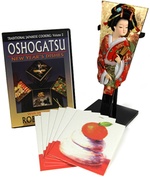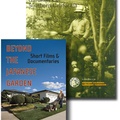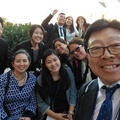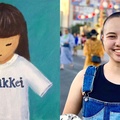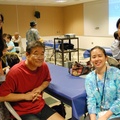In the Western world, New Year’s Eve is a big day for parties to celebrate the end of a year and the fresh start of a new one. In Japan, the beginning of the New Year, or Oshogatsu, is when friends and family gather together for what is considered to be the most important holiday of the year. It is celebrated throughout the country and by Nikkei around the world with symbolic food, decorations, activities, and other traditions to wish for an auspicious year. In the United States, it is also a holiday whose celebration has melded Japanese and Americans traditions.
Prior to 1873 when Japan adopted the Western calendar system, Oshogatsu was celebrated based on the lunar calendar. However, since then, it is celebrated on the first day of January of each year. In Japan, Oshogatsu celebrations typically last several days, beginning right before January 1 and ranging from three days to one week. In the United States, the Oshogatsu holiday is typically only celebrated for just one day – many American businesses open on January 1 or just after.
Delicious Oshogatsu meals are probably the most memorable aspect of New Year celebrations for many Japanese American families. Not only are many of the dishes prepared for this special occasion tantalizing and mouth-watering, they are also imbued with special layers of meaning to bring good fortune and prosperity into the New Year. Because Oshogatsu is typically celebrated over multiple days in Japan, the traditional New Year dishes are food that can be prepared in advance and will last without easily spoiling or becoming soggy. However, because Japanese Americans typically only celebrate one day, you’ll find a variety of non-traditional Oshogatsu food included on the menu including sushi, tempura, and teriyaki.
Some of the traditional food include various osechi ryori such as kuromame (cooked sweet black beans) symbolizing good health and kazunoko (herring roe) symbolizing fertility. Many of the lucky foods are included because their names are similar to auspicious words.
A perennially popular Oshogatsu dish that deserves special mention is ozoni, a soup made with mochi (sticky rice cakes). There are many ways to make ozoni, but the dish always contains mochi, with a broth made from fish, seaweed, miso, or chicken, and includes various types of vegetables or meats. The way in which a family prepares their ozoni is influenced by the area of Japan that their ancestors are originally from.
Toshikoshi soba are buckwheat noodles that symbolize long life and health. It literally translates to “year-crossing” or “year-bridging” soba. They are traditionally eaten on New Year’s Eve just at the new year begins.
Besides delectable dishes, Oshogatsu is also characterized by many special decorations that enliven storefronts and homes with brilliant colors and special connotations of auspiciousness. For Japanese Americans, the most popular Oshogatsu motif is perhaps the kagami mochi or okasane, which features a small mikan (mandarin orange) with an attached leaf sitting atop two discs of mochi with the top one slightly smaller than the bottom piece. This decoration was typically placed in several locations throughout one’s home, and also exchanged as New Year’s gifts. Japanese American manju-ya (Japanese confection shop) and markets sell the pieces to put one together, as well as pre-assembled ones with varying degrees of elaborate extras to make the presentation even more special.
Another popular Oshogatsu decoration is the kadomatsu, which is an arrangement of bamboo, pine, and flowers. The kadomatsu is usually comprised of flowers and plants which symbolize good luck, and then placed in front of the house to welcome the gods for the New Year. Additional decorations are related to traditional Oshogatsu activities, including colorful hagoita (battledore) which are used to play a game called hanetsuki, and kakizome, calligraphy scrolls wishing good fortune.
In the United States, daruma (modeled after Bodhidharma, the founder of Zen Buddhism) blends the Western tradition of making New Year’s resolutions with the tradition of the painting in the eyes of the doll—the first when you make your wish/resolution, and the second once it has been achieved. Other popular images are of the Asian zodiac sign for the New Year (2008 will be the Year of the Rat).
Since mochi plays such an important part of Oshogatsu celebrations, one of the most popular customs is mochitsuki, or the making of mochi by pounding special sticky rice into a dough used to make the mochi. This traditional activity is enjoyed by families, but is also done in larger scale by Japanese American communities as a way to celebrate and share their culture. It is always a crowd pleaser and involves two or more people who take turns in pounding the cooked rice with a large wooden mallet, and flipping the rice mound between strikes.
If reading about Oshogatsu has made you curious, we encourage you to join the Japanese American National Museum or other Nikkei organizations for their annual Oshogatsu celebrations. You might witness a live mochitsuki, enjoy auspicious food, and learn even more about the traditions. There are also many resources online, including information, photos, and video clips on DiscoverNikkei.org. We hope this article will inspire you to try some special Oshogatsu foods or put up some decorations this year, and may your New Year be filled with luck, prosperity, and happiness!
* This article was originally published on the Japanese American National Museum Store Online.
© 2007 Susan Chen and Vicky K. Murakami-Tsuda



